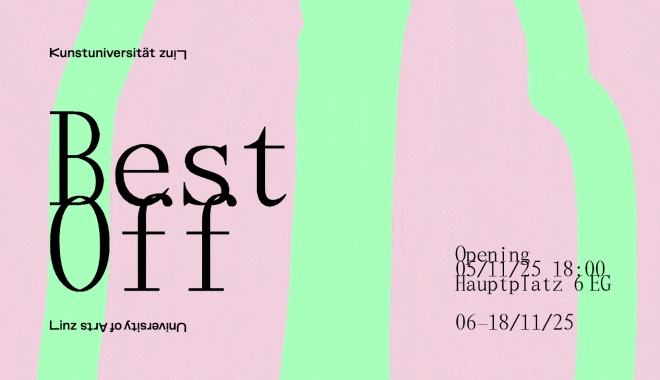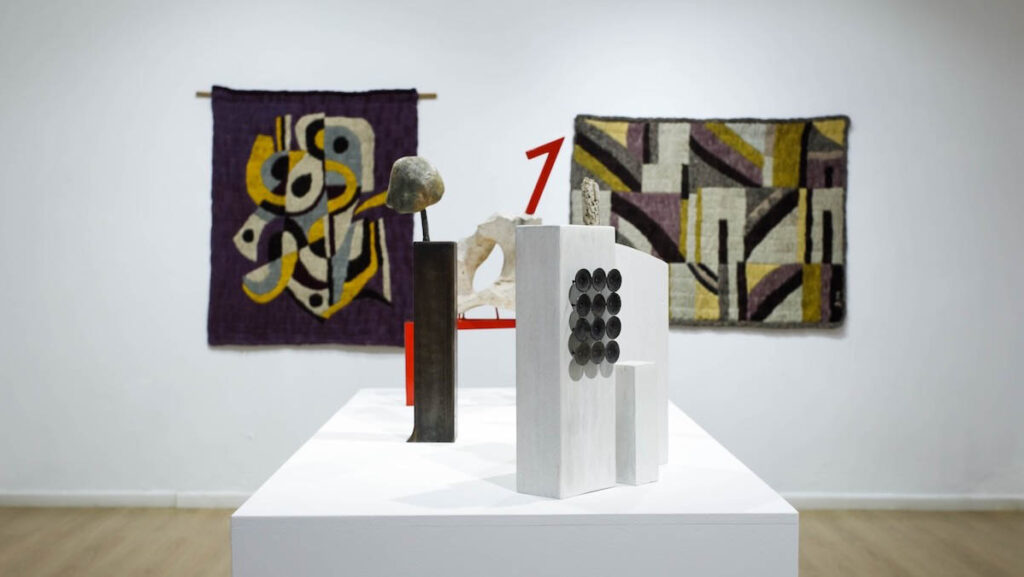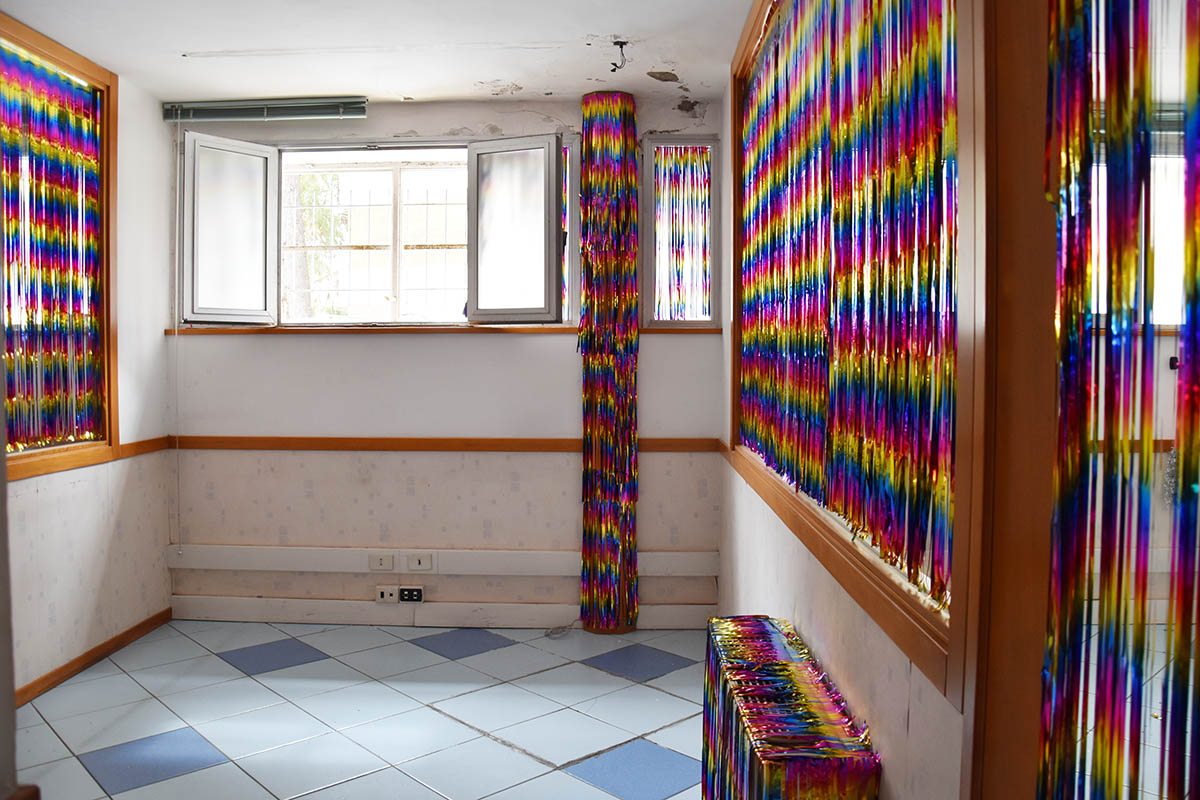
What inspires you from the world we are living in?
I’m interested in observing how animal instincts influence our behavior. I find it amusing how humans believe they’re so intelligent, when in reality, we’re all just children who never really grew up, or rather, children who went in the wrong direction, one that’s not conducive to the higher development of consciousness.
We don’t have the tools to know ourselves and we face our fragilty with anger, envy and other attitudes that make our condition worse. This is why I use irony. The first step in questioning oneself is to take oneself less seriously. I am one of these adult children.
I am very attracted to the aesthetics of your works: the soft sculptures, or all the ones where you work with inflatable materials1. How did your interest in these materials begin, and what have they revealed to you over time?
It all began with the sculpture I created for Planetarium. The installation was placed inside the chapel of the former maximum-security prison at Palazzo d’Avalos in Procida, a space enclosed by walls; heavy with memory and meaning. I decided to approach themes like spirituality, life, and death through the eyes of a child. Children (real ones, not adult-children) have a perception of time and space that is far broader and more expansive than adults’, just like their imagination.
Over time, I realized I’m drawn to these materials precisely because they’re not traditionally used in sculpture. The foil sheets of balloons, fabrics, and plush stuffing are materials typically destined for decorative objects and toys, things I enjoy reshaping into new forms.
Using elements we usually associate with play or leisure to talk about serious and urgent topics helps me stay balanced between the feeling of imminent collapse and the pleasure of playing with a balloon. And really, that’s the state we live in every day.
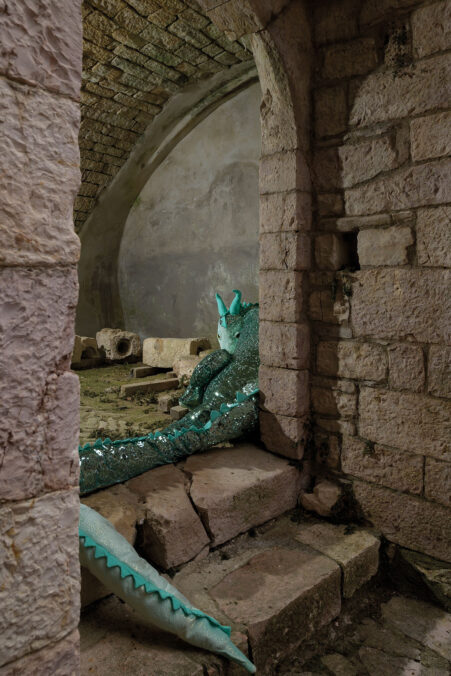
If your art would be described with hashtags, what would they be?
#melancholy #existentialism #capitalism #time #animals #childhood #play #nature #fragility #loneliness
You have a remarkable ability to transform spaces – like turning Palazzo Braschi into a merry-go-round carousel or activating the forecourt of a church in Sogni Ambulanti. I’ve rarely come across a portfolio with so many intensely site-specific works. It feels like site-specificity has become almost a medium in itself for you.
That’s absolutely true! For me, physical space is like a blank sheet of paper for someone who draws. I think this comes from my background in dance, and the essential relationship it has with space. Maybe it’s also because, in the house where I grew up with my family, I never had a space of my own, not physically, not even mentally for art. But when they saw how I could fill spaces with my site-specific works, things changed.
Are your materials mostly light?
Yes, they’re mostly light. They tend to trigger a sense of sweetness, melancholy, and warmth…

There seems to be a recurring element in your work: objects and figures that are suspended, floating, or disconnected from the ground. In Mi Manchi sculptures rest on the floor but aren’t visibly anchored from above. Is there a specific meaning or feeling behind this sensation of hanging or weightlessness?
Yes, because I always want to project the viewer into a suspended state—like a freeze-frame, where something has already happened and something else is about to happen.
Compared to other artists, I really like that you often let others, like Gaia Bobo, write about your work. What’s it like to collaborate with writers and curators?
My work isn’t intellectual. My approach to art is very intimate, personal, almost self-analytical. Talking with people who dedicate themselves to understanding art is always a source of growth for me, because it helps me grasp aspects I hadn’t yet clarified or wasn’t able to express verbally. Even this interview is giving me that same very pleasant feeling.
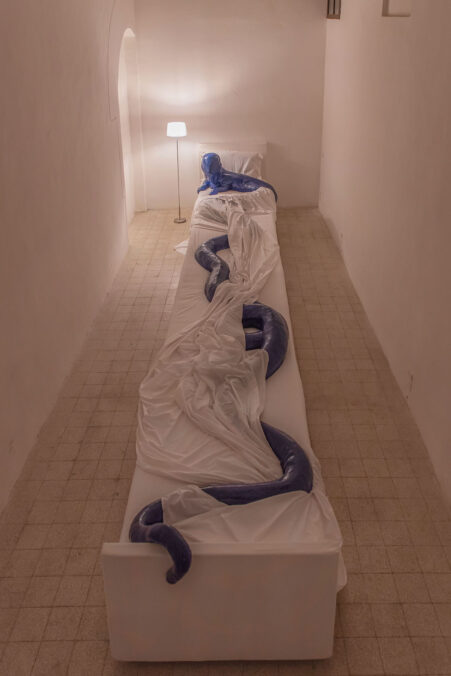
How is your relationship with Naples, and what does a typical day look like for you, Gabriella?
I believe Naples taught me how to “make do with what you have,” to turn lack of opportunity into motivation. If I’m working on a piece and something’s missing or breaks, I try to welcome that as a kind of suggestion or advice, sometimes the piece changes and ends up even better than what I originally envisioned.
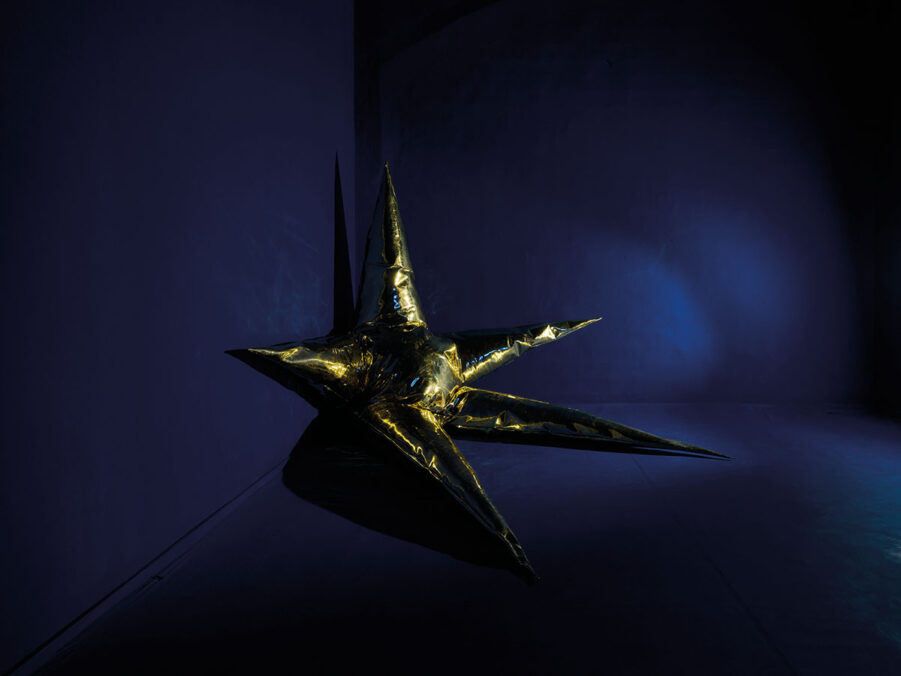
Ultimately, it’s about staying in the “famous” here and now. Naples is a city that lives in that dimension. I see it every time I leave the house: there’s always chaos and color everywhere, and every day you can discover a new idea in the markets or among street vendors. That lifts my spirits. But when I have an idea and need to focus, I shut myself in my home studio, sometimes for weeks. When I get to the production phase, I move to my workshop, right in the heart of the chaotic Sanità neighbourhood, on the ground floor of a historic building surrounded by bassi (street-level homes). The residents and neighbourhood kids are often in my studio. Sometimes they help, sometimes they totally distract me, and other times they cook for me. Being alone is impossible and that’s how I’ve come to know Naples.
Before studying at the academy, you also studied dance and music. Can you tell us what made you then to decide for the academy or for contemporary art?
As for the academy, the first year went very well, there was a lot of work on space. The following years were quite difficult and I couldn’t find stimulation, I became convinced that my path would be dance. As for music, I didn’t study it that much. I studied piano as a child, but then rhythmic gymnastics training took up all my free time. I used to participate in C-level competitions, and when I was 12 years old I participated in national competitions. When I went to high school, I switched to studying contemporary dance until a few years ago, participating in workshops, aerial dance classes, juggling and dance theater. In my 20s, I took a few drumming lessons and was in a post-punk band. I had a lot of fun. I had also started teaching dance for a group of aera dance students doing classes that mixed elements of contemporary dance with dance-theater. We worked a lot on retrieving animal movements and interacting with props. Then in the two-year program, I met Rosaria Iazzetta, a wonderful woman who was a sculpture teacher. She helped me bring it all out. With her, I made my first site-specific work, which was called Party Alone. In time, I realized that nothing could give me satisfaction like contemporary art, because it allows me to express myself differently every time and to go to the essence of things by going beyond technique. For my performances, I always make the music. The song I sang for party alone is a cover of Sia that I did.

Considering the key role that Party Alone plays in your artistic development, could we pause to discuss that work in more depth?
“Party Alone” was a very strong job for me both emotionally and physically, I did everything myself from setting up to communication to organizing the bar and food for the guests. I choreographed for the performer and did a performance myself. The venue was the old offices of my grandfather’s company, where my father then worked all his life. To my father, I am a bit of an alien and we never had a good relationship. The space had been totally abandoned for years. It was very dirty and full of lifeless creatures…. It took me a month to clean it up, and already that phase was the beginning of the work. Taking care of a lonely place that was no longer needed…. We kept each other company. It was a way to breathe life into a place that was left alone and at the same time to bring me closer to my father, also to give him a dive into something out of the ordinary. For me party alone was a gift to him. I don’t know what came to him, but I remember he was very smiling that day.
In Bathroom Dance, you reference the visual and threading culture of Native American textiles to reflect on the notion of origin. Can you tell us something in this regard, and how does origin enrich one?
As for my origins, my maternal grandfather was originally from the island of Guam. I recognize every day in my face and body all the characteristics of that place. I have never been there, but I have always studied the island on the Internet. It fascinates me to think about the fact that my grandfather grew up in a place where the native language is still spoken and there are still huts, although now it looks more like a resort since it became a U.S. colony. My grandfather later left as a sailor in World War II, was a Pearl Harbor survivor and was then sent to work here in Naples where he met my Neapolitan grandmother. The fact that in my family there is a mixture of languages-Neapolitan, American and my grandfather’s oriental face-and cultures-my mother with father from Guam and Neapolitan mother from a humble family, my father the son of a wealthy Neapolitan businessman-has made me constantly reflect on the connection to natural life and how the American empire has colonized and transformed everything with capitalism.
Lastly, how do your works emerge? How do you come from considering the theme to the realisation?
I write a lot. It helps me understand myself. Sometimes I fall in love with a material or an object. I try to understand why it interests me and what it conveys to me, and from there the transformation begins. But when I have to make a site-specific work, I look at the space and study its history. After a few days, I have a clear image of what inhabits it. I use the computer a lot with programs to simulate the space to figure out the exact measurements of the work to be made. From there I begin to figure out how to technically realize the work to make it as identical as possible to how I had seen it in my mind. My workbooks are mainly filled with contacts from factories, craftsmen, and material stores. Then I write down all the procedures I adopt to make the work such as the quantities of material, the proportions between two materials to be mixed, the drying times…
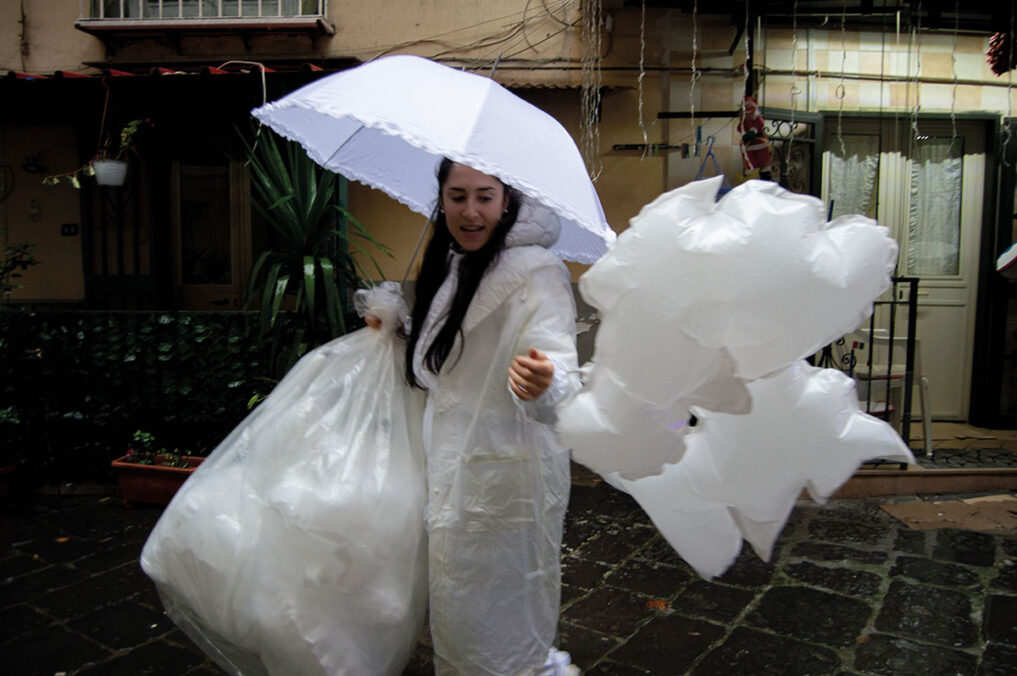
Gabriella Siciliano – https://www.gabriellasiciliano.com/
- See Da casa mia non si vede il mare, 2024; GUEST STAR Destiny, 2023, Elliott; Sogni Ambulanti, 2022; Planetarium, 2021). ↩︎



